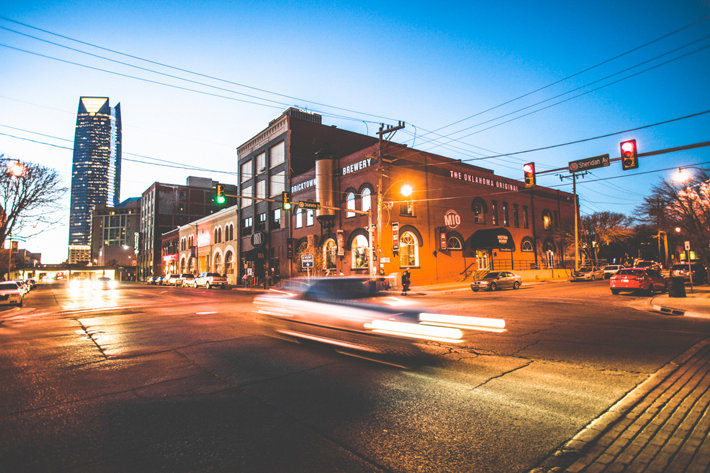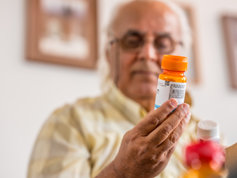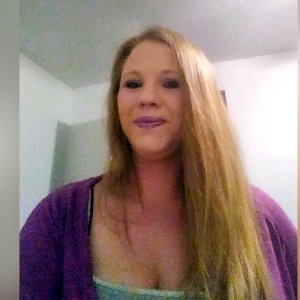Oklahoma Has One of the Worst Prescription Drug Abuse Problems in the Nation

“It only take a little to lose a lot.” Those are the words that headline one of the many online public health warnings that Oklahoma state health administrators published about the danger of prescription drug misuse. Since the mid-2000s, Oklahoma has struggled with a serious prescription drug addiction crisis, a festering emergency that’s only gotten worse with each passing year.
Recent reports indicate Oklahoma residents may have the worst prescription drug problem in the nation. With that in mind, it is crucial for people who live in Oklahoma to:
1). Get informed about prescription drug addiction.
2). Help anyone they know who is addicted to prescription drugs by getting them into a qualified drug rehab program.
New Reports Indicate Oklahomans at Highest Risk Ever for Prescription Drug Addiction

According to Oklahoma’s Department of Health, of the more than 700 Oklahoma residents who lose their lives to drug overdoses each year, six out of ten of those overdoses involve at least one prescription drug. This makes prescription drugs the leading cause of drug-related deaths in the state. No other drug lays claim to this high of a percentage of total drug deaths as does prescription drugs. In fact, more deaths in Oklahoma occur from prescription drugs than all other drug-related deaths in the state combined.
The following are additional facts and statistics about prescription drug addiction in Oklahoma:
- Opioid addiction is the most lethal drug problem in Oklahoma, with prescription opioids being the leading cause of opioid-related deaths. According to the National Institute on Drug Abuse, in 2017, 172 of 308 opioid-related deaths in Oklahoma were caused by prescription opioids, a rate of 4.3 deaths for every 100,000 people living in Oklahoma.
- Oklahoma also has one of the highest rates of opioid prescriptions per population in the nation. In 2018, Oklahoma doctors wrote 79.1 prescriptions for opioid pain relievers for every 100 residents in the state, compared to the national average of 51.4 such prescriptions for every resident. That means Oklahoma’s prescribing rate is more than 1.5X the national average.
- It is not a new story that Oklahoma has one of the highest rates of prescription drug abuse in the nation. According to an Obama White House Report, Oklahoma was in the top ten U.S. states for the misuse and abuse of prescription pain relievers as early as 2009.
- Approximately 9.66% of Oklahomans use drugs, compared to the national average of 8.82%. Also, the rate of drug-related deaths in Oklahoma is higher than the national average, likely exacerbated by the high rate of prescription drug use in this state. More Oklahoma residents die from drug use than from motor vehicle accidents or firearms every year.
- According to the Oklahoma Health Department, prescription drugs kill about two Oklahoma residents every day, making it the leading cause of preventable death for Oklahomans who are between the ages of 26 and 64. For over a decade, the state has consistently ranked in the top ten of all states in the nation for prescription drug-related fatalities, accidents, and other harm.

- A 2016 news article from an Oklahoma media group reported that the state’s prescription drug addiction crisis had officially reached epidemic-level proportions; the worst in the nation. Quoting author Silas Allen, “Oklahoma had the highest percentage of individuals age 12 and older who reported using prescription painkillers for nonmedical reasons.” Allen went on to say, “According to data from the 2013-2014 survey, which is the most recent available, 4.95 percent of Oklahomans age 12 and older reported using prescription painkillers for nonmedical reasons at some point in the past year.”
“Oklahoma had the highest percentage of individuals age 12 and older who reported using prescription painkillers for nonmedical reasons.”
Since the 2010s, Oklahoma has invested heavily in state-level public health efforts to curb the state’s seemingly unstoppable prescription drug addiction crisis.
State-Level Public Health Policy Efforts
Oklahoma public health leaders have implemented several policy measures in an effort to curb prescription drug addiction and death. For example, the state put into place a Prescription Drug Monitoring Program in 2016. Quoting one public health resource, “The statute requires all dispensers of Schedule II, III, IV, and V controlled substances to submit prescription dispensing information to the Oklahoma Bureau of Narcotics & Dangerous Drugs Control within 24 hours of dispensing a scheduled narcotic.” This program helps prevent doctor shopping, one method by which opioid painkillers are diverted.
Oklahoma has also set into place state-wide prescription drug take-back programs. These are local public health efforts designed to get unused medications out of people’s homes and properly disposed of (to help prevent the diversion of those substances into the hands of those who would misuse them).
Oklahoma has even gone so far as to release conservative opioid prescribing guidelines, recommendations to Oklahoma doctors to cut back on the number of opioid prescriptions they write each year and to always work towards non-opioid solutions for patients’ pain before opting for opioid pain relievers. Remember, Oklahoma doctors prescribe 79.1 opioid prescriptions for every 100 residents in the state, compared to the national average of 51.4 prescriptions for every 100 residents. Prescribing rates need to come down in Oklahoma.
In 2016 the Governor of Oklahoma published a 28-page document laying out a detailed strategy for how state leaders and public health officials would get prescription drug addiction under control and eventually solved. And while these efforts and others like them will have some positive effects in tackling prescription drug addiction in Oklahoma, more effort is needed to create real progress in reducing and eventually eliminating Oklahoma’s prescription drug addiction epidemic.
The Need for Drug Treatment
Oklahoma’s public health efforts that seek to monitor or reduce prescription opioid drug prescribing or which seek to dispose of unused medications are valuable. However, with hundreds of Oklahomans dying from prescription drugs overdoses each year, more needs to be done to overcome the problem.
People in Oklahoma who are addicted to prescription drugs must seek help at qualified drug rehab centers. No prevention efforts or cautionary programs implemented through public health policy alone will help someone who is already addicted to drugs. Only a qualified residential drug rehab center can provide the resources and services needed to overcome prescription drug addiction.
If you know someone addicted to prescription drugs in Oklahoma, please do everything you can to get that person into a drug and alcohol rehab center as soon as possible. Please do not wait until it is too late. Just because prescription drugs are legally prescribed does not mean they are safe or harmless. If someone you know is misusing these substances and cannot stop, please ensure they receive professional help.
Sources:
- https://oklahoma.gov/health/prevention-and-preparedness/injury-prevention-service/drug-overdose.html
- https://obamawhitehouse.archives.gov/sites/default/files/docs/state_profile_-_oklahoma_0.pdf
- https://1nyf7d23rko6133g5y18owua-wpengine.netdna-ssl.com/wp-content/uploads/prescription-drug-abuse.pdf
- https://www.oklahoman.com/story/news/columns/2016/06/02/report-highlights-oklahomas-problem-with-rx-drug-abuse/60670667007/
- https://oklahoma.gov/health/prevention-and-preparedness/injury-prevention-service/drug-overdose/opioid-prescribing-guidelines.html
- https://www.ok.gov/health2/documents/UP_Rx_Abuse_Prevention_State_Plan_2016.pdf


